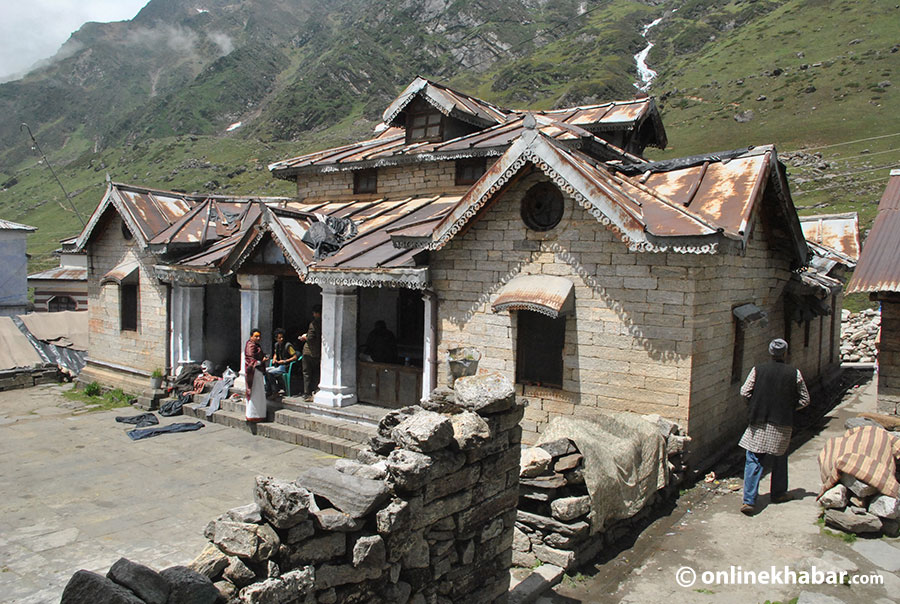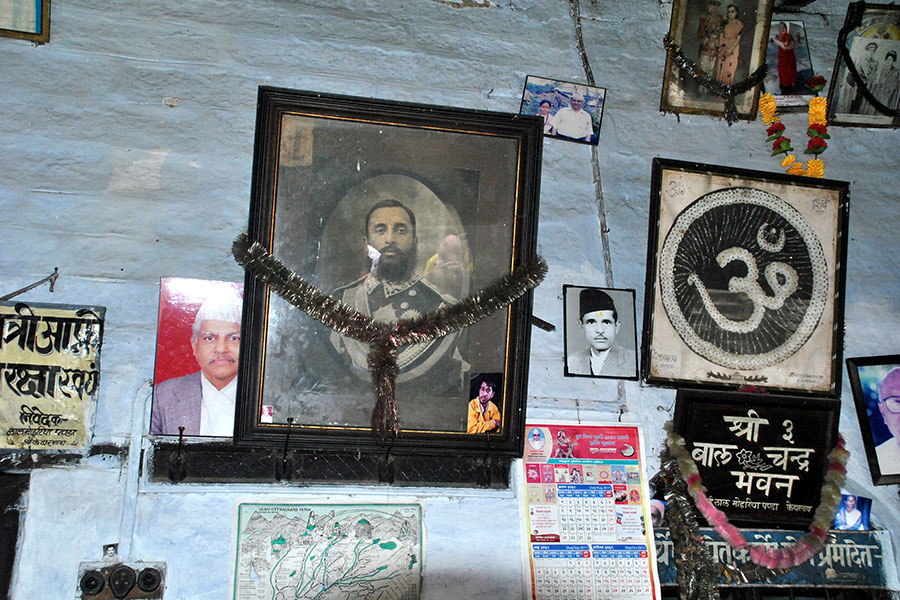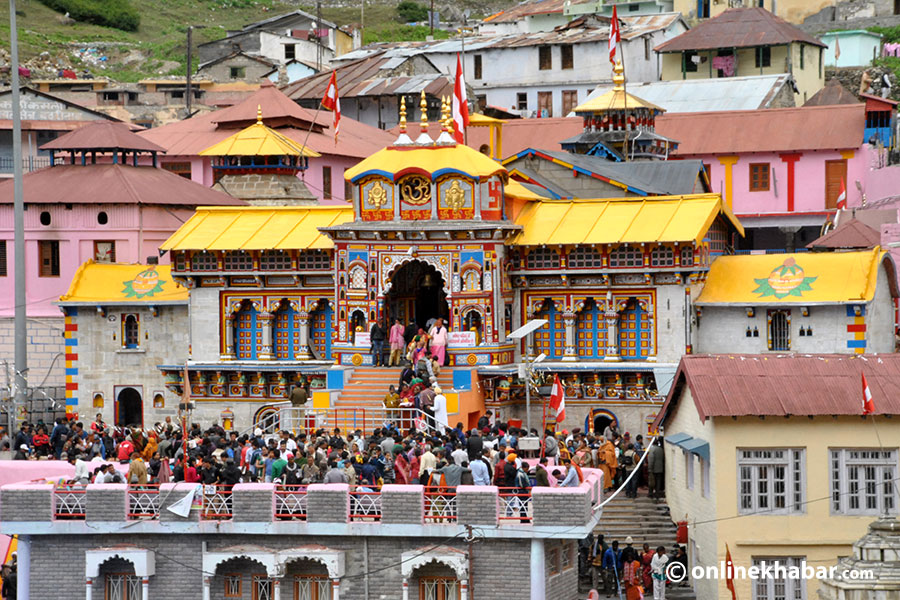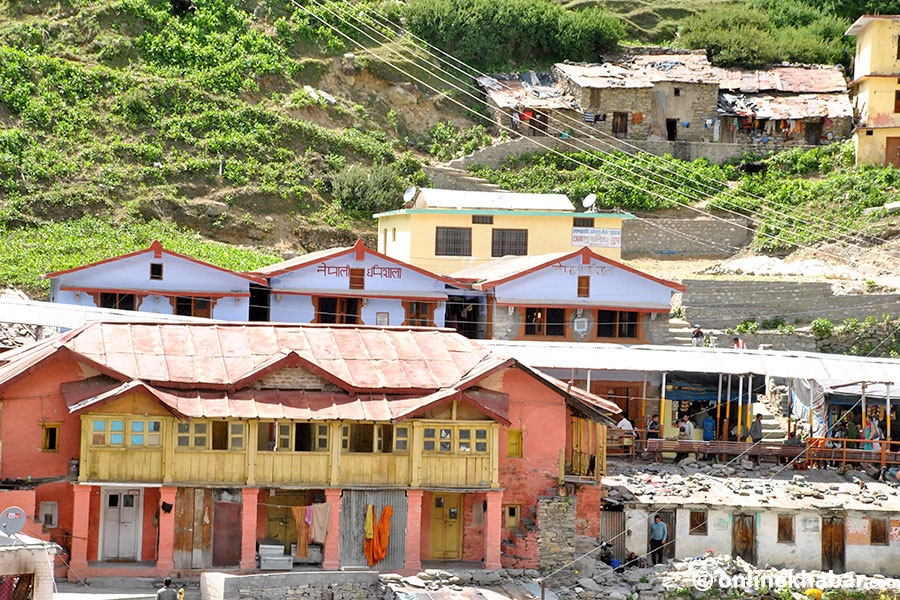On the night of April 24, 1806, furious King Rana Bahadur Shah ordered his employees to behead Tribhuvan Khawas and to blind his younger brother Sher Bahadur Shah, on the charge of financial irregularities. However, in the blink of an eye, Sher Bahadur Shah killed the king himself.
Before that, Rana Bahadur Shah had left the throne and settled in Kashi (Vanaras) of India as Nirgunananda Swami before he returned to Kathmandu in 1804 to serve as a regent of his minor son King Griwan Yudda Bikram Shah. As mentioned in an article by Bhesh Narayan Dahal, a former director-general of the Department of Archaeology, Rana Bahadur Shah lived at Lalita Ghat during his stay in Kashi.
After Rana Bahadur Shah, during the reign of his grandson King Rajendra Bikram Shah, Lalita Ghat and Rajarajeshwari Ghat were rebuilt as Nepali heritage sites. Likewise, the Samrajyeshwari temple was built in the name of his queen Samrajya Lakshmi Devi. These monuments later came to be known as the ‘Nepali temple of Kashi’ and ‘Pashupati temple’.
At present, Lalita Ghat and Samrajyeshwari temple are under the direct management of the Department of Archaeology of Nepal. And, the other one is managed by India. That is not one; during the Rana regime and even after that, many Nepali temples and dharamshalas were built in Vanaras.
In the late 1950s, Jagadamba Kumari Devi, a consort of Madan Shamsher, the youngest son of Prime Minister Chandra Shamsher, also built dharmashalas: one at Mangalagauri in Vanaras and the other at Rameshwaram in Tamil Nadu, which are still in operation. Besides, there are many Nepali dharmasalas built in Assam, Odisha, Rishikesh, Kedarnath and different other pilgrimage sites in India. Unfortunately, many dharamshalas and Nepali heritage sites built in the eras of several rulers in several parts of India are being either neglected or mismanaged by the government of Nepal except for a few ones.
Nominal effort for conservation

During his tenure as the director-general of the Department of Archaeology (DoA), Bhesh Narayan Dahal had sent two teams to India around a decade ago to compile data on Nepali heritage. A team led by Sandeep Khanal, an official of the department, visited Haridwar, Rishikesh, Badrinath and Kedarnath in northern India. Another team led by Aruna Nakarmi visited Assam in northeastern India and Odisha, Tamil Nadu and Rameshwaram in the south.
The teams had submitted a report to the DoA on the endangered condition of half a dozen prominent Nepali heritage sites in India. Shortly thereafter, the leadership of the department changed. Later, no action was taken on the data collected by the previous leadership, which is now gathering dust at the department.
According to the spokesperson of the department, Ram Bahadur Kunwar, the department has allocated a budget for the protection of the Samrajyeshwar Temple and Lalita Ghat in Kashi this fiscal year as well.
Journalist Kanak Mani Dixit, who is campaigning for the search and protection of Nepali heritage in India, is of the view that the government of Nepal should take interest in the protection of Nepali heritage in India. When Deep Kumar Upadhyay was Nepal’s ambassador to India, he was requested to search for such heritage and launch a conservation campaign, informs Dixit.
Although the embassy was positive about the proposal at the time, Dixit says the work was abandoned after the change of the ambassador. He says the government now should take action for this.
In South India
Prime Minister Chandra Shamsher, who visited the UK in 1851, had performed a kshama puja, a religious function to be held to request the god for forgiveness, in Rameshwaram on his return.
At the same place, Jagadamba Kumari Devi built a dharamshala in 1959 and even kept an inscription in which it is written ‘Shree Jagadamba Nepali Dharamsala, a gift to Nepali traveller from Mrs Rani Jagadamba Kumari Devi. Established on 2016 (BS) Shivaratri.’ Now, this dharamshala has also become a victim of neglect.
The chief of the team sent by the DoA, Nakarmi says that Nepali heritage in Rameshwaram was found mismanaged. According to him, there was a tradition of sending Rs 500 from the Guthi Sansthan for the management of Nepali heritage in Rameshwaram. However, it has been a long time since this last happened. Due to this, the management (ownership) of the Nepali dharamshala in Rameshwaram has increased the risk of getting out of Nepal’s hands, says Nakarmi.
There is another Nepali dharamshala at Jagannath Dham in the Puri district of Odisha. According to Nakarmi, it is the most organised Nepali dharamshala in southern India. Even there, aid from Nepal has stopped. But, pilgrims from Nepal are still provided free meals and accommodation there.
In Northeast India

The Nepali dharamshala built near the Kamakhya temple in Kamrup, Assam is now in a dilapidated condition. Along with the dharamshala, there are Nepali-style houses. According to Nakarmi, the main person there could not be identified after many people claimed to be the original pandas (priests) with the team of the department.
The existence of the Nepali dharamshala at Bhubaneshwar in Odisha, 63 km north of Jagannath Dham, has been wiped out. Bhubaneswar is the ancient capital of Odisha and there was a Nepali dharamshala in the famous Lingaraj temple area.
But, there is no evidence about who built it. Only the king of Nepal has the right to worship on the throne of that temple. Due to that, officials have speculated that a dharamshala may have been built there during the reign of a king. Former King Gyanendra Shah had performed special worship on the Ratna throne of the same temple in 2017.
In North India
The practice of visiting pilgrimage sites in Nepal and India is very old. It is understood that the rulers of Nepal used to build and manage temples, ghats and dharamshalas in different parts of India. One of such monuments, the Nepali dharamshala at Bharati Bhawan in Bada Bazaar, Haridwar, is still run by the priests authorised by Nepali officials.
Sandeep Khanal, the leader of the team deployed by the department in North India, says the Nepali heritage of Haridwar, Rishikesh, Badrinath, Kedarnath and other places has been neglected.
It is mentioned in the epic ‘Jagadamba’ based on the biography of Rani Jagadamba that Rani Jagdamba Devi also established a Nepali dharamshala in Haridwar. Further, it is also written that grants have been provided for the necessary management by renovating the dharamshalas in Badrinath, Kedarnath and Haridwar.
There is a Nepali dharamshala and a Sanskrit school in Rishikesh, 24 km northeast of Haridwar. Both structures were built by Shree Anantanandaji Giri Maharaj in 1861 for Nepali pilgrims. Now, it does not cost money for Nepali pilgrims to eat and stay there.
Also, there is a Kurma Narayan temple in Ayodhya. To date, the government of Nepal sends Rs 5,000 a month for the expenses of daily worships there. Also, a 10-room guest house has been constructed in the temple with the help of the government of Nepal.
At this temple, the Shalikgram stone taken from Muktinath is still worshipped as the main deity. According to Prapannacharya, Rani Rajkumari Devi built the Venkatesh temple in Kathmandu in memory of her daughter and the Kurma Narayan Temple in memory of her daughter.
In Kedarnath

The Nepali dharamshala near the Kedarnath temple was known as the ‘Nepali Bhawan’. Dozens of properties including Nepali dharamshalas in the Kedarnath area were washed away and damaged by the floods of 2013.
Khanal, the head of the team from the Department of Archaeology, says the inscriptions kept by the youngest wife of Chandra Shamsher, Rani Balkumari, were found in Kedarnath. Balkumari had named the building ‘Balachandra’ after her husband. It is mentioned in the epic ‘Jagadamba’ that Rani Jagadamba Devi later renovated the dharamshala there.
There was also a full-length oil painting of Chandra Shamsher and Balkumari at the dharamshala (Nepali Bhawan), which provided free meals to Nepali pilgrims. Ram Bahadur Kunwar, the spokesperson for the department, says the department did not know the condition of the dharmashala there.





















